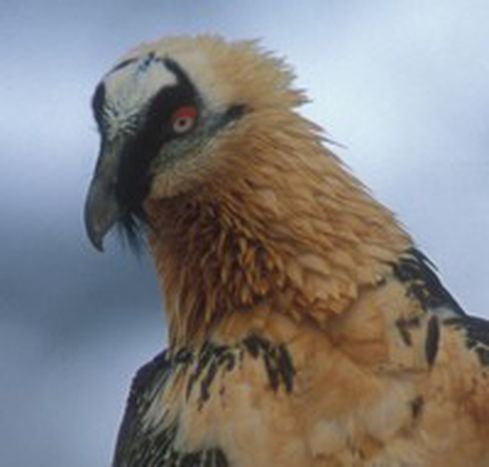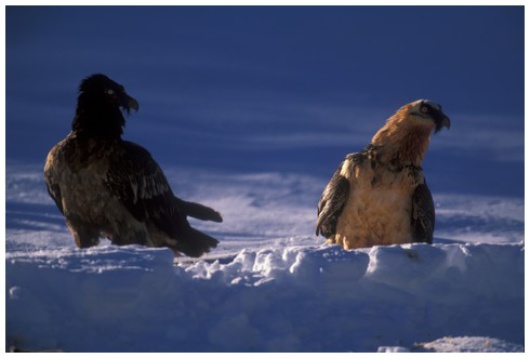
2010, or sayonara to one third of the world’s species
Published on
Translation by:
 kate hollinshead
kate hollinshead
According to the United Nations Environment Programme (UNEP), 24% of all Europe’s species of butterflies, birds and mammals have already disappeared from some areas
Some 785 species, plant and animal, have already been wiped off the face of the earth. Another thousand are on the brink of extinction and 17, 000 others are seriously endangered. These figures, released by the World Conservation Union, are a warning to us all: if we continue down this deathly path, by 2020 one third of the world’s species will be nothing more than a memory.
Hoping to slow the decline in biodiversity in member states, the EU has set 2010 as a deadline for action. cafebabel.com went to find out more about this precarious situation alongside the Spanish 'Fundación Gypaetus', a foundation responsible for the LIFE project for the reintroduction of the white-tailed eagle in Andalusia. The need to maintain the delicate balance between human beings, our environment and all other life forms has become a major priority for Europe, in order to prevent links in our ecosystem from breaking down for good.
Many aggravating factors, including demographic pressure, uncontrolled urbanisation, climate change, the depletion of natural resources, illegal hunting and the introduction of exotic species, threaten the survival of native species like the white-tailed eagle. This majestic bird of prey, once a familiar sight in mountain regions all over Europe, now survives only in the Pyrenees, in Corsica and in Crete.
Matter of LIFE or death
In 2004 the Gypaetus Foundation, a non-profit making organisation working to preserve the nature and landscapes of Andalusia, was granted European funding for its LIFE project, aiming to reintroduce the white-tailed eagle in the Spanish region where it disappeared in the eighties.
Thanks to a budget of 1.5 million euros, five young white-tailed eagles have been soaring through the Andalusian skies for the last two years, carrying much hope on their broad wings. Of course, when compared to global environmental problems, the success of this project appears rather modest. Nonetheless it is an important step forward and proves that the worst can still be avoided. Although the EU began drawing up legislation to protect biodiversity in the seventies, a focused strategy did not appear until 2001, when prevention of the destruction of biodiversity became an important political aim for the first time.
‘It was also in that year that, for the first time, the fixed date of 2010 was given as a time frame for action,’ says Jose Eugenio Gutierrez, project co-ordinator at the Gypaetus Foundation.
 ‘Not only are we the guardians of our natural heritage for the benefit of future generations, we must also fight against the extinction of more species. We must realise that our natural environment is become less and less rich as days go by, and that this threatens the very survival of our own species. By protecting the white-tailed eagle and its habitat, we are also benefiting other species, including human beings. Nature grants us favours, such as the regulation of the water cycle and the climate, which are indispensable and irreplaceable assets’.
‘Not only are we the guardians of our natural heritage for the benefit of future generations, we must also fight against the extinction of more species. We must realise that our natural environment is become less and less rich as days go by, and that this threatens the very survival of our own species. By protecting the white-tailed eagle and its habitat, we are also benefiting other species, including human beings. Nature grants us favours, such as the regulation of the water cycle and the climate, which are indispensable and irreplaceable assets’.
European Union leads the way
In May 2006, aware of the serious nature of this problem, the EU presented a plan outlining 150 concrete measures to be implemented. Wishing to strengthen the current list of protected species, Natura 2000, an EU-wide network of nature protection areas, has also emphasised the need for united action by authorities, the private sector and education providers.
The Gypaetus Foundation’s project also follows this type of approach. One part of their work promotes the development of an international network while another focuses on education and raising awareness as preventative measures. ‘From the outset, we have paid close attention to the copious advice given out by international organisations like the European Endangered Species Programme (EEP) which co-ordinates centres for breeding in captivity, and the Foundation for the Protection of the Bearded Vulture, responsible for the reintroduction of the species in the Alps. The most important thing for us is to get results and share these with others, not only within the scientific community, as we have done with those responsible for reintroducing the white-tailed eagle in Morocco’s Atlas Mountains, but also in order to raise awareness amongst the general public. Ignoring this situation is quite simply unacceptable,’ says Gutierrez.
Due awareness of the problem or exaggeration?
A wider-reaching, more coherent policy and more flexible funding seem to be the keys to tackling this problem head-on. The extent of the problem is underlined by Ahmed Djoghlaf, executive secretary of the UNEP’s convention on biological diversity, who believes we are now seeing the biggest wave of extinctions since the disappearance of dinosaurs from the earth.
‘An exaggeration? Perhaps! But if we don’t change tack as quickly as possible, the consequences will be catastrophic. The preservation of the environment is the responsibility of every one of us: it’s our own future at stake !’ Gutierrez finishes.
From today, 12 March 2008, there are 660 days to go until 2010, the EU’s deadline to cut this figure. Will we make it on time?
Save me: Gypaetus speak
Translated from 2010: cuenta atrás para salvar la biodiversidad europea


